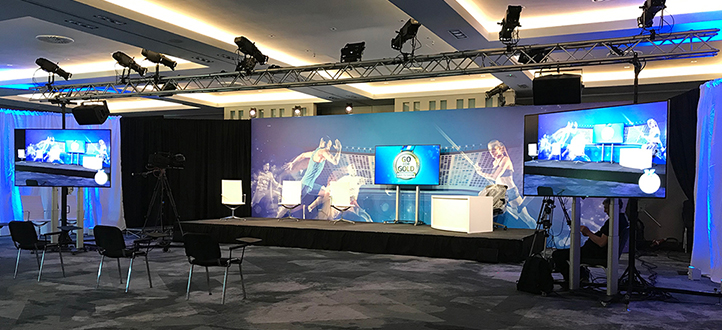Illuminating the Impact of Lighting Techniques on the Art of Film Projection Mapping Techniques
Illuminating the Impact of Lighting Techniques on the Art of Film Projection Mapping Techniques
Blog Article
Video projection projection is an innovative art form that merges technology and innovation to transform common spaces into extraordinary sight displays. This method involves casting images and footage onto three-dimensional objects, such as structures, artworks, or stages. One of the key significant elements in producing successful projection is the use of efficient illumination techniques. Proper illumination enhances the aesthetic components of the projection and guarantees that the images are crisp and engaging. This article examines the influence of lighting methods on video mapping and how they can elevate the overall encounter.
Illumination plays a crucial role in motion mapping because it establishes the mood and tone of the exhibit. Different illumination techniques can evoke various emotions and reactions from the audience. For example, using gentle, warm illumination can create a inviting environment, while vivid, cool illumination may produce a more energetic or dramatic effect. By thoughtfully choosing illumination hues and intensities, artists can manipulate how viewers interpret the displayed visuals, leading to a more immersive encounter. The equilibrium between mapping brightness and surrounding light is crucial, as it can greatly affect the visibility and impact of the images.
In addition to, color and intensity, website link the direction of light also affects the effectiveness of mapping. Illumination from different directions can generate shadows and accents that introduce depth to the projected images. This method, known as chiaroscuro, can improve the 3D quality of the subjects being projected. Additionally, using dynamic lights can add dynamism to the display, making the experience more involving for the audience. When the light interacts with the projected visuals, it can create an illusion of motion and change, grabbing the audience's focus.
Another essential aspect of lighting in projection is the use of special features. Techniques such as gobo lighting, which uses patterns and shapes to filter light, can introduce texture and complexity to the projections. This method enables creators to layer images and produce visually stunning results that enhance the projection. Moreover, adding laser lights or LED lights can further enhance the display, offering a unique blend of visual elements that draw the audience in. These unique effects, when used thoughtfully, can elevate the projection beyond a basic show to an immersive piece of creativity.
In summary, the influence of illumination methods on motion mapping is significant. By comprehending how various illumination elements interact with projected images, creators can create captivating experiences that weblink resonate with viewers. The careful choosing of color, brightness, angle, and special features allows for a vivid canvas of visual storytelling. As tech advances to evolve, the options for artistic expression in mapping will only grow, making lighting an ever-important component in this innovative art medium.